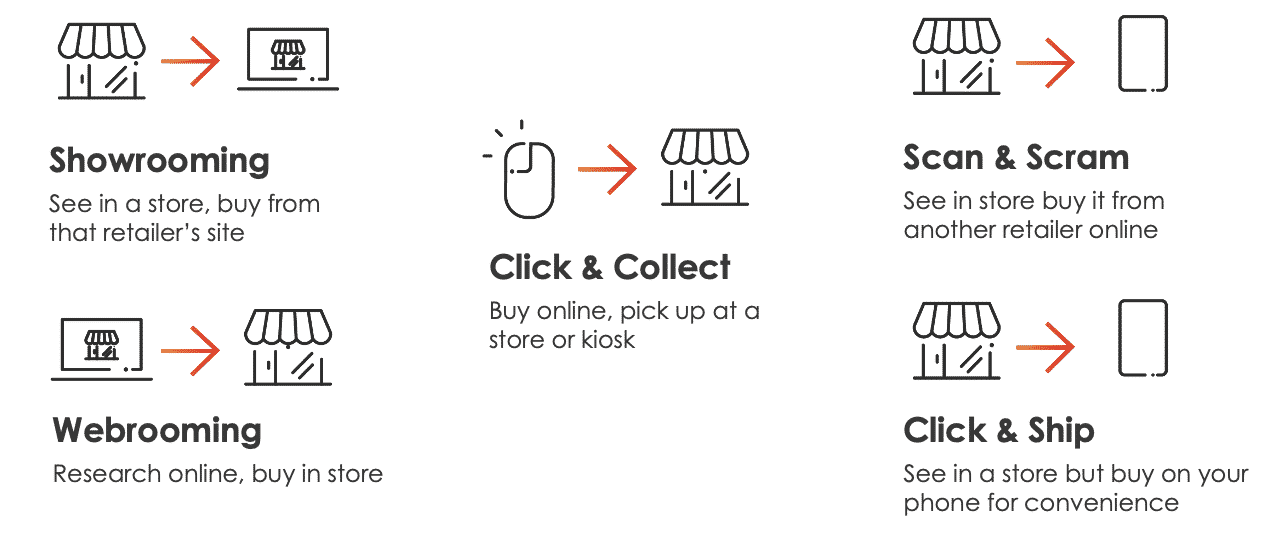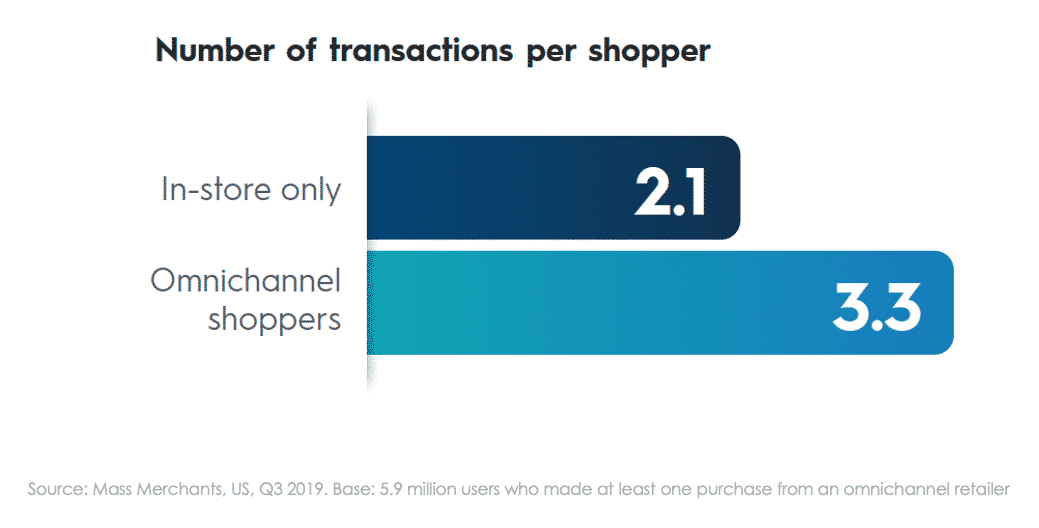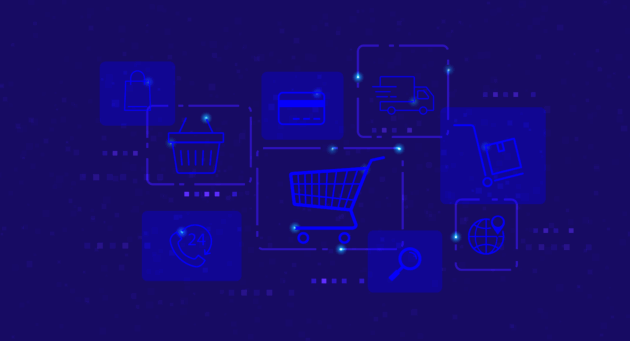According to Statista, in 2019, ecommerce sales accounted for just over 14% of all retail sales worldwide. That means that nearly 86% of all retail sales still happened offline.
No matter which channel ends up being the one where a final transaction takes place (in-app, mobile web, desktop, in-store, or even over the phone), today’s investigative mindset means that there are lots of touchpoints along a consumer’s path to purchase, and all of them influence the decision to buy.
In this post, we’ll dig into why in 2020, your best possible shoppers aren’t just online or offline — they’re both.
What do omnichannel shoppers do?
Omnishopping is all about enabling shoppers to buy and get the product whenever, and wherever, they want. Omnichannel shoppers use a variety of devices, platforms, and channels to browse and buy products — and want to have a connected, consistent experience across them all.
Here are three reasons why omnishoppers are the most valuable consumers today:
1. Omnichannel shoppers spend more.
A survey from Harvard Business Review showed that omnichannel shoppers spend an average of 4% more every time they’re in a store and spend 10% more when shopping online, compared to those who interact with a business on only one channel.
2. Omnichannel shoppers are more loyal.
The same Harvard study showed that omnishoppers are more likely to return. Consumers who engaged with companies on multiple channels visited a physical store 23% more often over a six-month period.
Here at Criteo, we analyzed data from our Shopper Graph and omnichannel client base to see just how frequently omnishoppers purchase compared to single-channel shoppers.
Over a 3-month period**:
- In-store only shoppers made, on average, 2.1 purchases, compared to 3.34 purchases for shoppers who also visited the store’s website
- 63% of omnichannel shoppers made 2 or more purchases, versus just 44% of in-store only shoppers
3. All generations like omnichannel shopping — especially Gen Z and Millennials.
While Gen X and Boomers still spend more than younger generations, Gen Z is estimated to become the largest generation of consumers in 2020 and already has tremendous buying power. According to research by Millennial Marketing, Gen Z represents up to $143 billion in direct buying power annually in the US alone. That’s without accounting for the impact they have on their parents and grandparents’ household purchases.
Criteo’s own Shopper Story research shows that younger generations exhibit the highest levels of omnichannel shopping behavior. An overwhelming majority of Gen Z and Millennials in the US browse products online then purchase them in store (83%) and make purchases online after seeing products at a retail store (81%) on a regular or occasional basis.
The findings indicate that Gen Z and Millennials are also more comfortable with in-app shopping: 70% of them sometimes make in-app purchases, compared to 33% of Boomers and the Silent Generation. In addition, three out of four (75%) Gen Z and Millennials reported that they regularly or occasionally order items online and then pick them up at a store. This online-driven foot traffic presents retailers with another opportunity to upsell.
Connecting physical stores and ecommerce is essential for retailers in 2020.
Modern consumers expect to shop on their terms, and a customer-centric strategy is integral to delivering them what they want, when they want it, wherever they want to get it. That’s why we’ve worked hard to hone our technology so it can optimize campaigns toward both online and offline outcomes. Many of our partners have surpassed their business goals by connecting online and offline data while delivering seamless brand experiences both online and off.
Tim Rogers VP of Omnichannel at Criteo, believes that driving customer lifetime value and new customer acquisition are key to long-term growth for retailers, and that creating “a more customer-centric marketing strategy, as opposed to channel-centric” is what will matter in 2020. In Criteo’s Shopper Story 2020 report, Rogers explains that leveraging physical stores is essential to winning the competitive ecommerce space.
To learn more about how Criteo can help you take a more customer-centric approach by delivering ads to consumers based on both their online and offline behavior, download Criteo’s Shopper Story 2020 report:


















